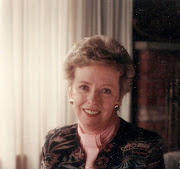The chapters on the ‘50s and ‘60s from my book, Looking Back: Boomers Remember History from the '40s to the Present, have been covered in previous posts, so this time I will talk about the ‘40s. This was the decade that drastically changed the world, and it was the beginning of tremendous population growth as “baby boomers” fueled enormous changes in society.
In 1941, the United States joined the war against Japan when it was attacked at Pearl Harbor. Only days later, we also went to war against Germany, helping defend our allies in Europe and beyond. Thus we were thrust into World War II, and most able-bodied men left their homes and families to fight in either the Pacific or in Europe.
Most women stayed home, but a few went to war as nurses and support personnel. Those who stayed home rushed to fill the jobs left behind—especially those that were crucial to the war effort. Ships, airplanes, ammunition, uniforms, and numerous other commodities were vital to winning the war, and those industries had to be sustained. The working wife and mother became, for the first time, commonplace throughout the United States.
When you remember that America had just pulled out of the Great Depression of the ‘30s, when thousands of homeless people starved and froze to death because of lack of jobs, food, and shelter, it’s easy to understand the economic changes that engulfed the country during the war. Suddenly industry was humming as all of America's citizens rallied behind the war effort. Victory gardens were planted to help grow food for families. War bonds were sold to help raise money to fight the war. And rationing was also introduced to American consumers as gas, rubber, some foodstuffs, and other goods were in short supply.
(In the book: "Looking Back", Faye Crawford recalls the War years as a child growing up in Washington State. She remembers savings stamps and some of the shortages faced by her family, as well as her family members who served in the war.)
Laverne M. Brown remembers her parents volunteering to help watch for Japanese planes slipping across our coast from the watch tower in their small Oregon coastal town. Even with watch towers up and down the West coast, a Japanese submarine shelled a military depot at Fort Stevens, Oregon in June, 1942, and in September, 1942, a Japanese warplane bombed Mt. Emily, Oregon and ignited a forest fire. Incendiary bombs were also dropped near Brookings, Oregon.)
When the war ended the country was united in welcoming back its returning war heroes. American society was optimistic about the future and nothing seemed impossible. The war had served as a catalyst for new inventions, including technological advances that would change the world.
And when all those men returned home from the war, they married and started families. With optimism rampant throughout the country, the birth rate quickly expanded into the baby boom. New neighborhoods were built to hold these new families, and suddenly suburbs sprang up across the countryside. New shopping centers were built to service the ‘burbs, and people left the cities in droves to make their home in the new neighborhoods. Living outside of cities meant cars had to be purchased to commute to jobs in town and to drive children to school. New roads had to be built to move all that new traffic.
(In "Looking Back" Nola Rae Lewis recalls the G.I. Bill and its meaning to her after her husband-to-be returned from World War II. They met in college, which her husband attended on the G.I. Bill, and together they later purchased their home with a G.I. home loan guarantee.)
The ‘40s was a great decade with many high points, but it also heralded the start of the Cold War, a polio epidemic, UFO sightings, and various technological advances, social changes, and political scandals. I’ll cover those in the next posting. Meanwhile, you can read about the ‘40s and every decade since by ordering the book, Looking Back: Boomers Remember History from the ‘40s to the Present. Just click on the link below the book image to read an excerpt and to order.
Wednesday, January 23, 2008
Subscribe to:
Post Comments (Atom)


No comments:
Post a Comment